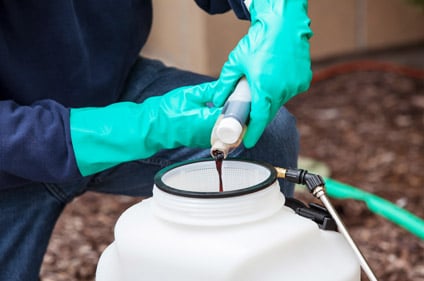You have found a new water source closer to your route because traveling all the way back to the shop at $4.09 per gallon (or whatever the cost is in your part of the country) of fuel just doesn’t make any sense.
You tell yourself that you have been doing this for a long time, you are a pro, and nothing can get in your way. But it only takes a tiny impediment to knock your putt offline, and today you hit a boulder. You did not have your water source tested!
While there can be any number of factors associated with tank mix water sources, let's focus is pH. Remember pH is the measure of acidity or alkalinity. It is measured on a scale of 0 – 14 with 7 being neutral. Anything below 7 is acidic while everything above 7 is alkaline.
Knowing this sounds somewhat simplistic, but the effects can be colossally catastrophic. pH, particularly alkaline water sources, can render some pesticides useless in mere minutes, and others severely degraded throughout the day, resulting in poor or no performance.
The process by which these chemistries are broken down by higher pH water sources is called alkaline hydrolysis. This process of breakdown is measured in its half life and has been studied by chemists for decades. Older chemistries tend to be more sensitive to pH, but several others still used on a daily basis can be susceptible.
What makes this more alarming is that alkaline hydrolysis is somewhat of a silent killer. If you have spent any time concocting tank cocktails (Kevin Lewis used to mix up to 8 products in a tank), you can see when something goes dramatically wrong. This is not so much the case here. The tell-tale signs of rapid color change, swirling solids, or a gelatinous mass at the bottom of your tank will immediately indicate mix incompatibility or a major issue. However, pH issues can be largely unseen.
It is always recommended that you only mix what you can spray in a day, which will reduce some of the potential for efficacy loss. Let’s take a look at some products and their potential for breakdown. This list represents half life:
- Imidacloprid – stable for >31 days at pH 5 - 9. Optimum pH 7.5
- Permethrin – stable at 6 - 8, ideal pH 7
- Cypermethrin – stable for 39 hours at pH 9
- Acetamiprid (Tristar) – unstable below 4 and over 7, ideal 5-6
- Trichlorfon (dylox) – pH 8 will degrade to its half-life in 63 minutes!
- Chlorpyrifos (dursban) – 1.5 days at pH 8
- Acephate – 3 days at pH 9
- Carbaryl (sevin) – 1 day at pH 9
- Captan – 10 minutes at pH 8
- Benomyl – 45 minutes at pH 9
- Mancozeb – 34 hours at pH 9
- How about going organic? Bt (Bacillus thuringiensis – Dipel) – unstable over 8
While there are others that can be rendered less than effective, you see the point. Based on the investment dollars in chemistry and your business, it pays to do the due diligence in having mix water analyzed. Simply using pH strips can be inexpensive but very unreliable, sometimes varying by as much as a point or two. Meters can be a little more spendy but worth it.
Back in the day, and maybe still today, farmers have used citric acid to acidify spray solutions. Some studies show that 2 ounces per 100 gallons will reduce the pH of tap water from 8.3 to 5.4 showing that sometimes wild swings can happen when using home remedies and should be avoided. As mentioned, several things can go wrong in a tank mix and pH is only one of them.
Reach out to the Ewing Technical Services Team with any questions.




